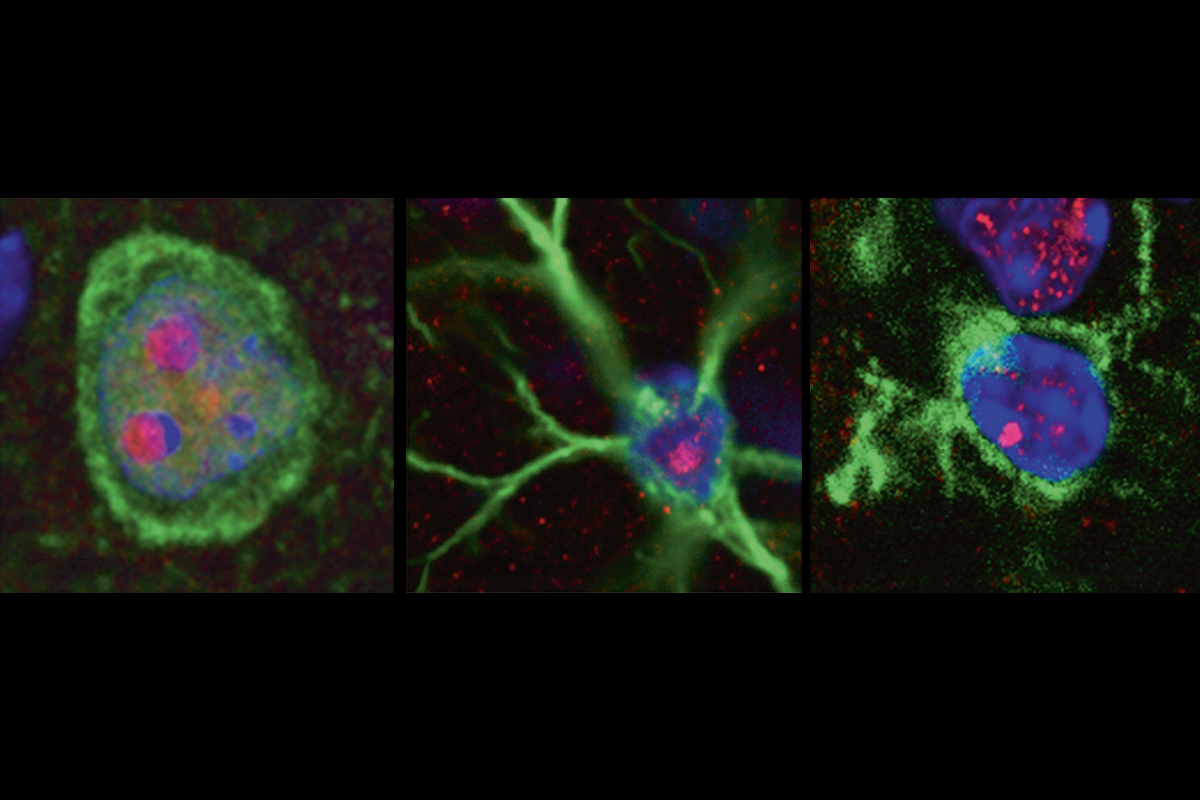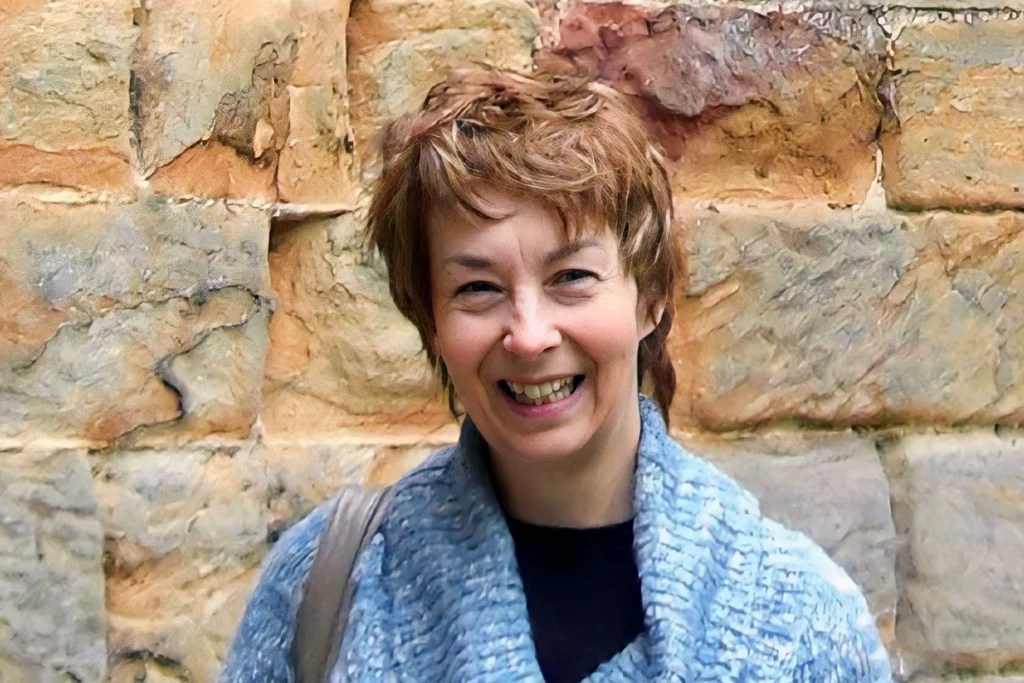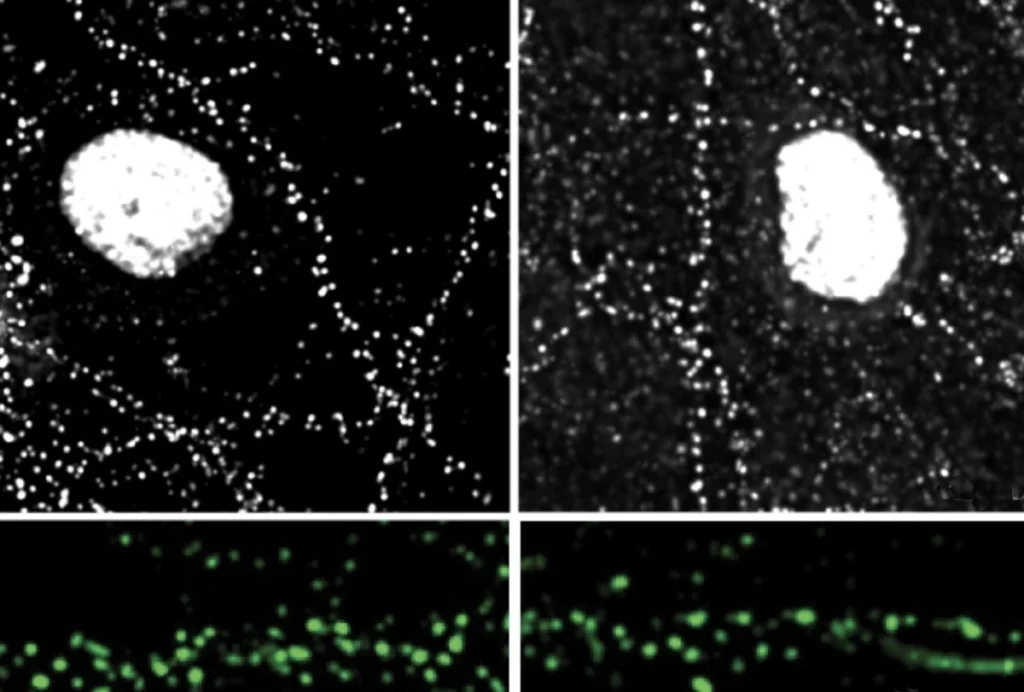- Domestic chicks could serve as an animal model of autism because early-life experiences and imprinting influence their development, three scientists argue. Spectrum has previously reported on a range of unusual animal models. Frontiers in Neuroscience
- The Kennedy Krieger Institute has changed its name to the Center for Autism Services, Science and Innovation to better reflect its multifaceted approach to improving autism research and care. KennedyKrieger.org
- A variant of the gene UBLCP1 in a Lebanese family with autism disrupts proteosome activity in cells. Translational Psychiatry
UBLCP1 gene; motor skills; brainstem nuclei
Here is a roundup of autism-related news and research spotted around the web for the week of 5 February.
By
Jill Adams
6 February 2024 | 2 min read

Central command: The gene UBLCP1, which regulates proteasome activity, is expressed in the nucleolus of neurons (red, left panel), astrocytes (middle) and microglia (right).
- Autistic children tend to have poor pattern-separation memory — the ability to distinguish among unique items with shared characteristics — though some overgeneralize and others undergeneralize. Autism
- Autistic and non-autistic children share similar levels of the neurometabolites glutathione and gamma-aminobutyric acid in multiple brain regions. Autism Research
- Adolescents with autism show delays in processing illusory contours, such as negative space shapes, which may contribute to visual perception, according to a preprint. bioRxiv
- Variants in the SP9 gene can cause either a loss or gain of function, which may explain why mutations in the gene can lead to a broad range of conditions, such as encephalopathy and autism. Genetics in Medicine
- Altered microstructure of some brainstem nuclei — namely, the parvicellular reticular formation-alpha and the lateral parabrachial nucleus — has been linked to social-communication difficulties and repetitive behaviors, respectively. Autism Research
- Females rhesus monkeys display a range of sociality; but unlike in males, social behaviors appear to be linked to social rank rather than co-varying with other autism-like traits. Spectrum has previously reported on the study of these primates as an autism model. Molecular Autism
- Researchers have developed an automated tool to assess motor-control skills in autistic children by measuring the smoothness and velocity of finger-tracing on a tablet. Journal of Autism and Developmental Disorders
Explore more from The Transmitter

Brain connectivity and letting the data speak with Emily Finn
By
Brady Huggett
1 May 2024 | 69 min listen

Carol Jennings, whose family’s genetics informed amyloid cascade hypothesis, dies at 70
By
Elissa Welle
30 April 2024 | 4 min read

Brain Gene Registry; neurite density; income disparities in autism diagnoses
By
Jill Adams
30 April 2024 | 2 min read
Cite this article: